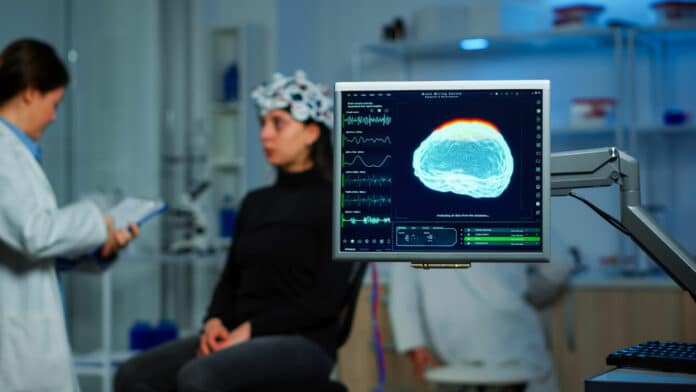Doctors, engineers, and brain scientists found significant about treating brutal depression. They studied the brains of people with depression who received a special treatment called deep brain stimulation (DBS). DBS uses implanted electrodes to stimulate the brain.
The researchers saw a particular brain activity pattern showing when the patients were improving. This pattern is like a sign that indicates if the treatment is working. It’s a big step forward for treating the most complex depression. Their findings were published in the journal Nature on September 20, 2023. It’s the first time we’ve learned how DBS affects the brain when treating severe depression.
DBS is a treatment where tiny electrodes are put in a specific part of the brain to send small electrical signals, like a pacemaker. It’s been used for diseases like Parkinson’s for a while, but it’s still being tested for depression. This study is critical because it shows that using data from the brain through the DBS device to help doctors understand how well the treatment is working. This can help make the treatment better for each person.
Now, the researchers have found a way to see if the treatment is helping with depression as it goes on. It’s like checking your blood sugar if you have diabetes or watching your blood pressure if you have heart problems – it tells doctors how the disease is doing at any time. And it can tell if the depression might come back.
The research team used artificial intelligence (AI) to find changes in brain activity that happened when people got better.
A study supported by the National Institutes of Health BRAIN Initiative examined ten patients with very tough depression. They all got a special brain treatment called DBS at Mount Sinai and Emory University. They used a new device that recorded brain activity. Over six months, they found a sign showing each person was improving. After six months of this treatment, 90 percent of the patients felt a lot better, and 70 percent were not depressed anymore.
John Ngai, Ph.D., director of the BRAIN Initiative, said, “This study demonstrates how new technology and a data-driven approach can refine DBS therapy for severe depression, which can be debilitating. This type of collaborative work made possible by the BRAIN Initiative moves promising therapies closer to clinical use.”
The researchers found that many patients in their study got better with the treatment. They used a special kind of artificial intelligence that could explain their decisions. This helped them see the particular brain patterns that showed when someone was no longer depressed.
A researcher named Sankar Alagapan said, “This special AI helped us find important brain patterns that show when someone is recovering from depression. It made it easier for the doctors to understand and use this information, which is a big step forward in finding new ways to treat mental health problems.”
Dr. Helen S. Mayberg, who played a significant role in this study, did an earlier trial in 2003 that showed deep brain stimulation (DBS) in a specific brain area could help people with really tough depression. In 2019, she and her team at Emory University found that this technique continued to work well for years.
She said, “This study adds even more to what we know. It shows that when we put the electrodes in the right place and keep using DBS, people with tough depression get better and stay better. It’s not just about seeing that it’s working; it can also tell us if we need to change the DBS treatment before the person starts feeling worse. This is a big deal for how we use DBS in the future.”
Dr. Christopher Rozell, who is part of this research, mentioned that solving brain problems is complex and needs experts from different fields to work together. This study shows that when engineers, brain scientists, and doctors work together, we can significantly progress in treating brain disorders and understanding how the brain works.
The researchers noticed something interesting: their faces showed it when patients started feeling better. They used AI to see patterns in patients’ facial expressions that matched their recovery from depression. This was even better than the usual rating scales doctors use.
They also used brain scans to look for problems in the brain’s connections. They found that the worse these connections were, the longer it took for the treatment to work. These findings support the idea that the electrical activity in the brain can tell us if the treatment is working.
Dr. Patricio Riva-Posse, who led the study, said, “Usually, we rely on what patients tell us and some tests to see if they’re getting better. But having direct signals from their brains can help us make better treatment decisions.”
Now, the team is checking these results with more patients and using advanced technology. They want to make this treatment available to more people in the future.
In conclusion, this research represents a significant step in understanding treatment-resistant depression. It offers hope for more effective treatments in the future. It highlights the power of interdisciplinary collaboration and the potential of advanced technologies in mental health.
Journal reference:
- Alagapan, S., Choi, K.S., Heisig, S. et al. Cingulate dynamics track depression recovery with deep brain stimulation. Nature. DOI: 10.1038/s41586-023-06541-3.
